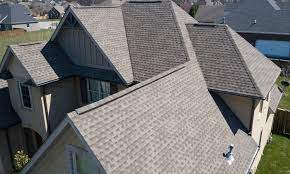Roofing, an essential element of construction, plays a vital role in protecting structures from the elements. While it may seem straightforward, roofing is a complex field with its terminology and measurement systems. One such term that is fundamental to understanding roofing is "the square." In the context of roofing, a square is not just a geometric shape but a crucial unit of measurement. In this exploration, we will delve deep into what constitutes a square in roofing, why it is important, how it is calculated, and its significance in the roofing industry. Amazon.com
Understanding the Square in Roofing
In the roofing industry, a square is a unit of measurement used to quantify the area of a roof's surface. However, unlike the common geometric concept of a square, in roofing, it does not refer to a perfect 1x1 meter square. Instead, it is a unit that encompasses 100 square feet (approximately 9.29 square meters) of roofing material or coverage. This unique terminology is rooted in the industry's historical evolution and has remained a steadfast part of roofing vernacular.
Importance of the Square
The square is a critical element in roofing for several reasons:
- Accurate Measurement: Roofers use squares to precisely measure the amount of roofing materials needed for a project. This precision is essential for cost estimation and resource planning.
- Standardization: The square provides a standardized method for measuring roofing areas. It ensures that everyone involved in the project, from contractors to suppliers, is on the same page regarding quantities.
- Efficiency: Working with squares streamlines the roofing process. It simplifies material ordering and minimizes waste, leading to more efficient construction projects. Read more about what is a square in roofing
Calculating a Square
To calculate a square, you must multiply the length and width of a roof section in feet. This will give you the square footage, which can then be converted into squares by dividing by 100. For example, if a roof section is 10 feet long and 20 feet wide, the calculation would be:
Square footage = 10 feet x 20 feet = 200 square feet
Squares = 200 square feet ÷ 100 = 2 squares
Roofers often use squares as a basis for determining the quantity of shingles, underlayment, and other roofing materials needed for a project. This measurement ensures that the right amount of materials is ordered and that the project stays within budget.
Significance in Roofing Projects
- Material Estimation: Roofing contractors rely on squares to estimate the number of shingles, tiles, or roofing rolls required for a project accurately. This prevents overordering or underordering of materials, saving time and money.
- Pricing: Pricing in the roofing industry often revolves around squares. Contractors and suppliers use square measurements to determine costs, making it easier to provide accurate project quotes.
- Labor Allocation: Knowing the number of squares needed for a project allows contractors to allocate labor resources effectively. It ensures that an adequate workforce is available to complete the job efficiently.
- Waste Reduction: Using squares for measurement helps minimize waste. Roofers can plan their cuts and installations more efficiently, reducing the amount of unused material.
- Project Management: Project managers can use square measurements to track progress, budget adherence, and material consumption throughout a roofing project, ensuring it stays on schedule and within budget.
Conclusion
In the intricate world of roofing, the concept of a square holds immense importance. It is more than just a unit of measurement; it is the backbone of material estimation, cost calculation, and project management. Accurate measurement and allocation of resources are essential for a successful roofing project, and the square is the key to achieving these goals. While the square may seem like a simple concept, it is the foundation upon which roofing professionals build durable, weather-resistant structures that protect homes and businesses for years to come. Visit official website onlyroofing.com

